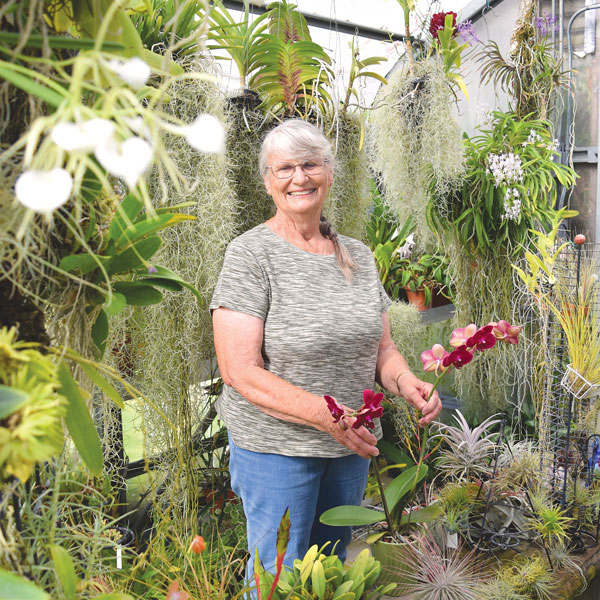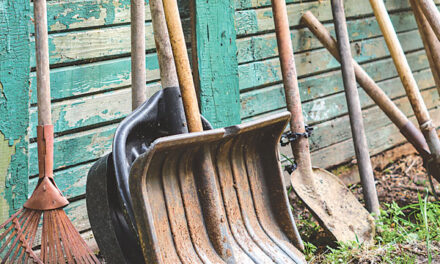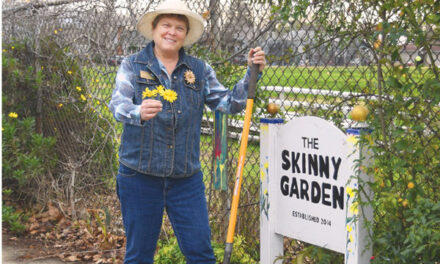Orchids seduce, delight and frequently meet an untimely death. Muttering, “I killed another one,” often precedes the shopping trip to buy more exotic beauties.
When inviting orchids into the home, longevity will not be an option unless you are willing to perform basic plant maintenance. Already in bloom to attract buyers, the challenge is to keep an orchid alive and nurture it into multiple bloom cycles over several years.

Native to the tropics, where they grow on trees and rocks, grocery store orchids (Phalaenopsis) are greenhouse grown, packed in sphagnum moss, inserted in plastic sleeves and dropped into decorative ceramic pots with no drainage holes. No drainage holes strongly suggest growers are silently promoting a death sentence to spur more sales.
Do not despair. You can grant Death Row pardons, and if you lose a few consider it a horticultural hiccup.
“I still lose a few,” says Vivian Sellers of Elk Grove, an orchid hobbyist and University of California Master Gardener. “I heard a speaker once say you cannot consider yourself a good orchid grower until you have killed at least a hundred orchids. After 25 years of growing, I am sure I have killed way more than that.
“Do not be discouraged if your orchid dies. It might not be your fault. Join the Sacramento Orchid Society (sacramentoorchids.org). They love newcomers.”
Sellers grew orchids in her home for five years before expanding to a greenhouse. Currently, she grows about 400 orchids. She has won numerous cultural awards from the American Orchid Society, is a past member of the Sacramento Orchid Society and belonged to the Orchid Forum, an online resource for orchid growing.
“Growing orchids is addicting,” she says. “There are so many species to choose.”
Sellers began with mostly Phalaenopsis (pronounced fal-uh-NOP-sis) orchids. Phalaenopsis or “moth orchids” are the most common retail orchid. The striking flowers are difficult to ignore in doctors’ offices, florist shops or on grocery store shelves. Orchids are one of the largest and most diverse plant families, with around 30,000 species, but our focus is on Phalaenopsis.
Two of Sellers’ no-nos: Never water orchids with ice cubes and never pot an orchid in potting soil. Ice can burn roots. When was the last freeze in tropical Southeast Asia, where Phalaenopsis are native? Potting soil is too dense for orchid roots that require air and drainage. Sellers prefers sphagnum moss for her Phalaenopsis, but there are numerous potting mixes.
When should you repot your new orchid? After the blooms fade. Sellers uses clear plastic pots to allow more light to the roots. Look for plastic pots with air holes or slots on the sides and bottom. Snip off the old flower stock, carefully remove the old potting mix and fill the new pot with fresh potting mix.
Sellers waters once a week most of the year. In winter, she waters less often. She uses her finger to test for moisture.
“Orchids like a deep watering. Then allow to dry between watering,” Sellers says.
With clear plastic orchid pots, it’s easy to see the roots, which should be firm and white or green right after watering. Grayish white indicates water is needed. Brown may mean overwatered and rotting.
Try to avoid directly watering atop the orchid. Water that collects where leaves meet stem can promote crown rot. Water the planting mix around the main stem.
Seemingly healthy orchids that stubbornly refuse to re-bloom are likely not receiving enough light, Sellers says.
“East and south window exposure is best,” she says. “North is not enough light, and west is too bright and hot. The plant will have dark green leaves with not enough light and red tinges if too much light.”
Orchids are worth the extra attention.
SAVE THE DATE
“Harvest Day,” the biggest single-day gardening event in the region featuring guest speakers and webinars, will be virtual this year from 8:30 a.m. to 1 p.m. on Saturday, Aug. 7. For details, visit sacmg.ucanr.edu.
Dan Vierria is a University of California Cooperative Extension Master Gardener for Sacramento County. He can be reached at masterg29@gmail.com. For answers to gardening questions, contact the UCCE Master Gardeners at (916) 876-5338, email mgsacramento@ucanr.edu or visit sacmg.ucanr.edu. Follow us on Facebook, Twitter and Instagram: @insidesacramento.















